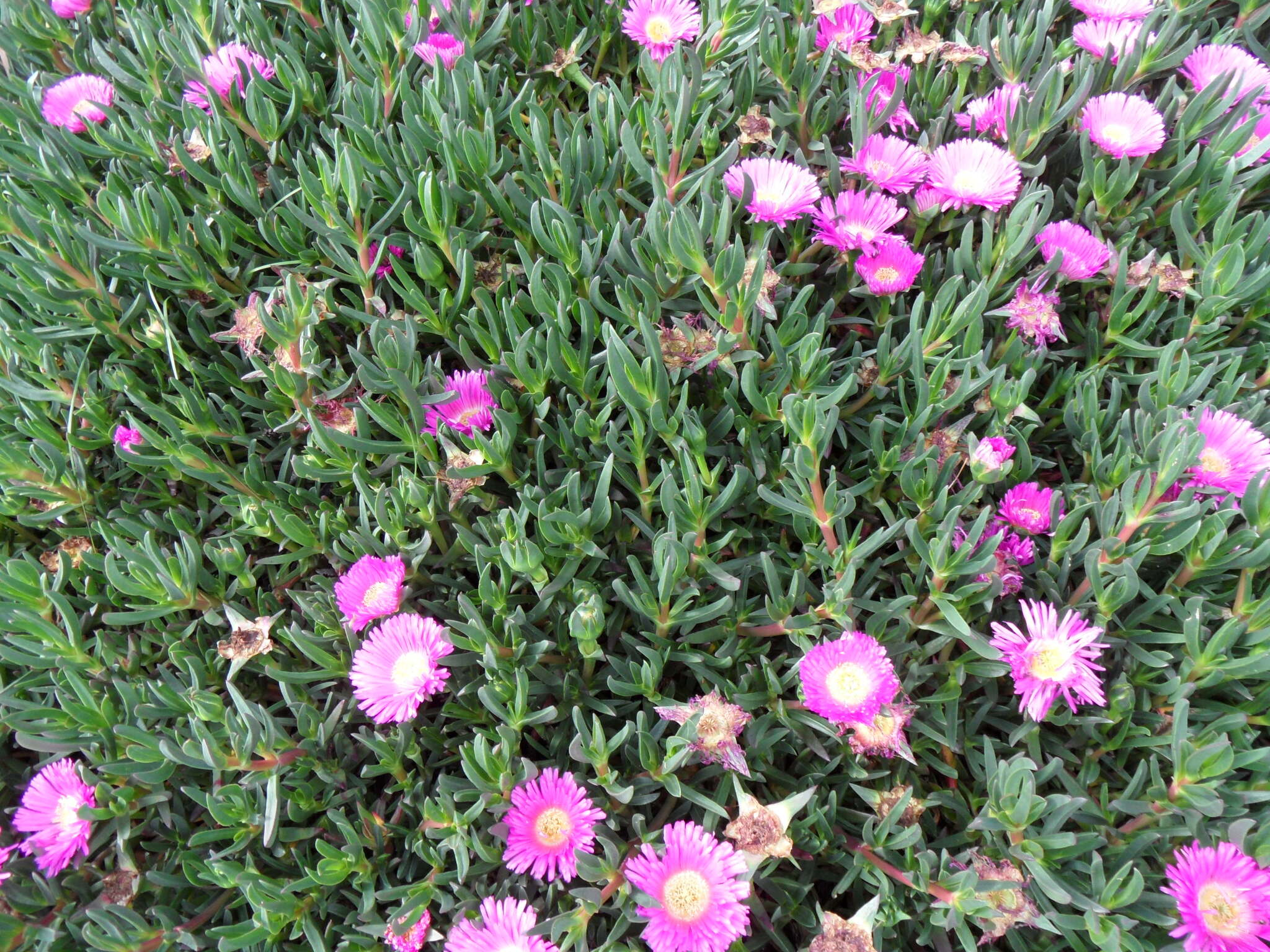
Greek karpos—fruit, brotos—edible.
Spreading, mat-forming perennial herbs. Branches 2-3 angled, thick. Leaves opposite, 3-angled, margins entire or toothed, smooth, blue-green with small dots, often thicker at the base. Flowers solitary, terminal, stalked. Sepals 5; petals numerous. Ovary of 4-20 chamÃÂÂbers, ovule placentation parietal; stigmas 4-20. Fruit fleshy, indehiscent, soften edible; seeds slightly flattened.
Known in SE Australia mostly for species used in coastal areas as a ground cover and for erosion control; sometimes naturalised. The superficially similar mostly coastal native Disphyma crassifolia (L.) L. Bolus, Rounded Noon Flower, differs in having a dehiscent capsular fruit.
Cuttings or sometimes from seed.
Fruit a juicy berry not opening by slits; ovary chambers 4-20.
30 species from SW Cape of South Africa, Chile (1), California (1), Australia (4).
Blake (1969), Wisura & Glen (1993).
Source: (1997). Aizoaceae. In: . Horticultural Flora of South-eastern Australia. Volume 2. Flowering plants. Dicotyledons. Part 1. The identification of garden and cultivated plants. University of New South Wales Press.
